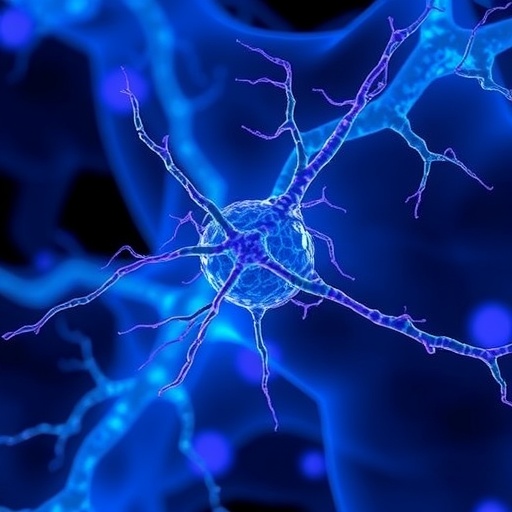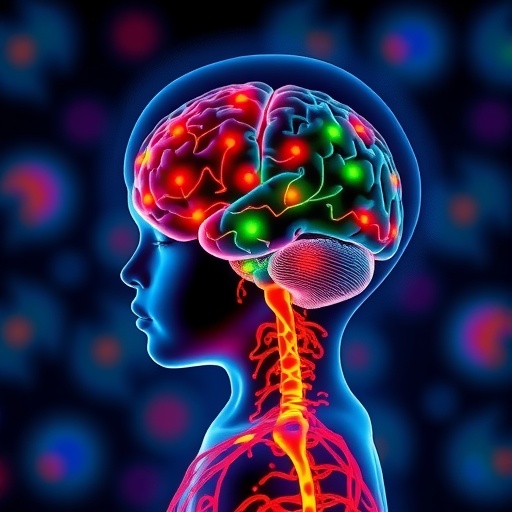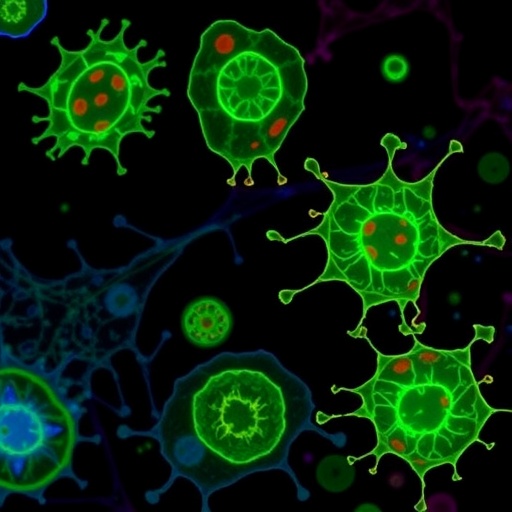A groundbreaking study published today in Nature Communications reveals an unprecedented role of lymphatic endothelial cells (LECs) in shaping immune memory, challenging long-held assumptions about these cells. Traditionally considered mere conduits facilitating lymph flow, LECs are now shown to possess a specialized genetic program that enables them to archive antigens, the distinct molecular markers of pathogens or vaccines, thus contributing directly to the immune memory landscape. This discovery opens exciting avenues for vaccine development and immunotherapies aimed at enhancing long-term immunity.
The research, spearheaded by a multidisciplinary team at the University of Colorado Anschutz, integrates expertise from medicine, immunology, microbiology, and molecular genetics. At the heart of their investigation is the question: how do LECs participate in storing antigenic information to fortify immune responses against future infections? What emerged is a detailed map of the gene expression profile that orchestrates antigen uptake, retention, and presentation within the lymphatic niche.
By employing cutting-edge single-cell RNA sequencing, the investigators precisely identified genes being expressed within individual LECs in real time, under the influence of immune stimuli. This level of resolution allowed them to pinpoint a transcriptional program—unique to lymphatic endothelial cells—that governs their capacity to archive immunological ‘memories’. Notably, this program modulates antigen handling in a way that can be predicted and potentially manipulated, shedding light on the cellular mechanisms fundamental to adaptive immunity.
Further refining their approach, the team integrated spatial transcriptomics to understand how these gene expression patterns manifest across lymph node architecture. This technique elucidates the regional specialization and temporal dynamics of LECs’ antigen-storage functions. Their work goes beyond static snapshots, following the trajectory of these cells over multiple time points, revealing a dynamic, evolving interplay between LEC genetic programs and immune environment.
Central to this progress was the application of sophisticated machine learning algorithms, which enabled the researchers to analyze immense datasets and identify patterns predictive of immune memory potential. By quantitatively correlating gene expression with antigen retention capacity, they demonstrated that the genetic “signature” within LECs can serve as a biomarker for robust immune memory across a spectrum of diseases and even across different species, highlighting evolutionary conservation.
The senior author, Dr. Beth Tamburini, emphasizes that this insight overturns previous notions that underestimated LECs’ immunological roles. “We now appreciate that lymphatic endothelial cells are not passive players but active architects of immune memory,” she explains. “Our identification of a dedicated genetic program signifies that these cells can be targeted therapeutically to either amplify or modulate immune responses.”
The first author, Dr. Ryan Sheridan, highlights that the integration of machine learning was critical in isolating this transcriptional program among the cellular complexity found in lymph nodes. “Without advanced computational tools, deciphering the nuanced gene regulatory networks within these cells over time would have been impossible,” he notes. The research thus stands at the intersection of bioinformatics, immunology, and molecular biology.
Importantly, this study’s implications extend to vaccine design. By manipulating the antigen-archiving capabilities of LECs, future vaccines could achieve longer-lasting, more potent immune protection. This could be particularly transformative for pathogens that evade immune memory or for cancers where immune recall responses require reinforcement. The identification of genetic targets within LECs represents a paradigm shift in immunotherapy strategies.
Methodologically, this investigation is distinguished not only by its technological sophistication but also by its experimental design which includes active intervention in cellular pathways to observe causal effects. By experimentally manipulating the antigen archival system within LECs, the researchers could confirm the functional relevance of the transcriptional program they identified. Such a multi-layered approach ensures that findings are robust, mechanistically grounded, and translatable.
This pioneering work also underscores the value of longitudinal studies in immunology. Traditionally, immune cell characterization has relied on isolated time points, limiting understanding of the temporal changes underlying memory formation. Here, monitoring LECs longitudinally exposed how their antigen-processing roles evolve, offering a richer, more accurate picture of their involvement in sustained immune defense.
While focused primarily on mammalian lymph nodes, the team posits that similar genetic programs may exist in other vertebrates, facilitating cross-species insights into immune memory mechanisms. This evolutionary perspective may foster comparative studies that deepen our grasp of immunity’s fundamental principles, potentially revealing universal targets for immune modulation.
Ultimately, this research marks a significant leap forward in immunological science, elevating lymphatic endothelial cells from overlooked lymph node residents to pivotal orchestrators of immune memory. The elucidation of their gene expression program provides a critical tool for designing next-generation immunotherapies and vaccines, aimed at harnessing the body’s natural memory systems to optimize disease protection.
Subject of Research: Immunological role and genetic programming of lymphatic endothelial cells in antigen archiving and immune memory formation.
Article Title: A specific gene expression program underlies antigen archiving by lymphatic endothelial cells in mammalian lymph nodes
News Publication Date: 2025
Web References:
Nature Communications Article
DOI Link
Keywords: Immunology, Immune memory, Lymphatic endothelial cells, Antigen archiving, Single-cell RNA sequencing, Spatial transcriptomics, Genetic transcriptional program, Vaccine development, Immune response, Machine learning, Immune therapies, Cellular immunity
Tags: antigen storage mechanismsCU Anschutz research findingsgene expression profiles in LECsimmune memory formationimmune response enhancementimmunotherapy advancementslymphatic endothelial cellslymphatic system functionsmultidisciplinary research in immunologypathogen recognition by immune cellssingle-cell RNA sequencing techniquesvaccine development strategies





